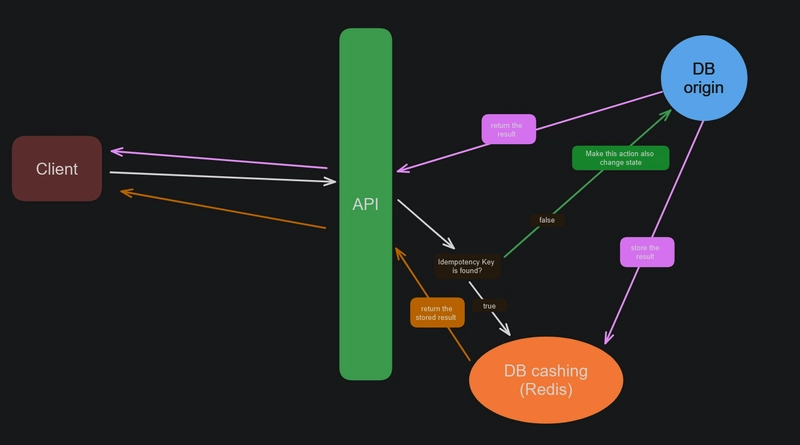Idempotency 🎯 is a crucial concept in software development that helps mitigate unintended errors or unhappy scenarios that users might encounter. This concept categorizes web events or processes into two parts: idempotent (ineffective) and non-idempotent (effective).

Ineffective (Idempotent) Operations 💡:
These operations do not change the state of the system regardless of how many times they are executed. Examples include PUT and GET requests. For instance, retrieving data (GET) or updating a resource to a specific state (PUT) multiple times will have the same effect as doing it once.
Effective (Non-Idempotent) Operations 🕸:
These operations change the state of the system each time they are executed, potentially leading to side effects if repeated. Examples include POST and PATCH requests. For instance, creating a new resource (POST) or modifying a resource partially (PATCH) can lead to different outcomes if the request is sent multiple times.
Scenario: Handling Duplicate Purchase Requests 🧱
Consider a scenario where a user makes a request to purchase an item. After clicking to send the request, the user's internet connection drops. The request completes on the server side, but the user does not receive a confirmation message. In this case, the user might resend the request, and the server, not recognizing that the operation has been performed already, processes it as a new request. Consequently, the user ends up purchasing the item twice, leading to dissatisfaction.
Solving the Problem with Idempotency 👨💻🛠
To prevent such issues, we can implement idempotency by creating a unique identifier (idempotency key) for each request and storing it in a temporary database. This intermediary system checks whether a request has already been processed or if it is a new one. Here’s how it works:
Generate Idempotency Key : Generate a unique key for each purchase request.
Store Key and Result: Before processing the request, check if the key exists in the database.
If it exists, return the stored result, ensuring the operation is not performed again.
If it does not exist, process the request and store the result along with the key.
- Return Stored Result: On receiving a request with the same idempotency key, return the stored result instead of processing the request again.
Conclusion ✔
Implementing idempotency in your services enhances the reliability and user-friendliness of your application, preventing common issues associated with repeated requests. It ensures operations like purchases are not accidentally executed multiple times, maintaining data consistency and integrity.
For a deeper dive into this concept, I recommend reading Alex Hyett’s detailed description and solutions.
https://www.alexhyett.com/idempotency for further insights.



Top comments (1)
Great!